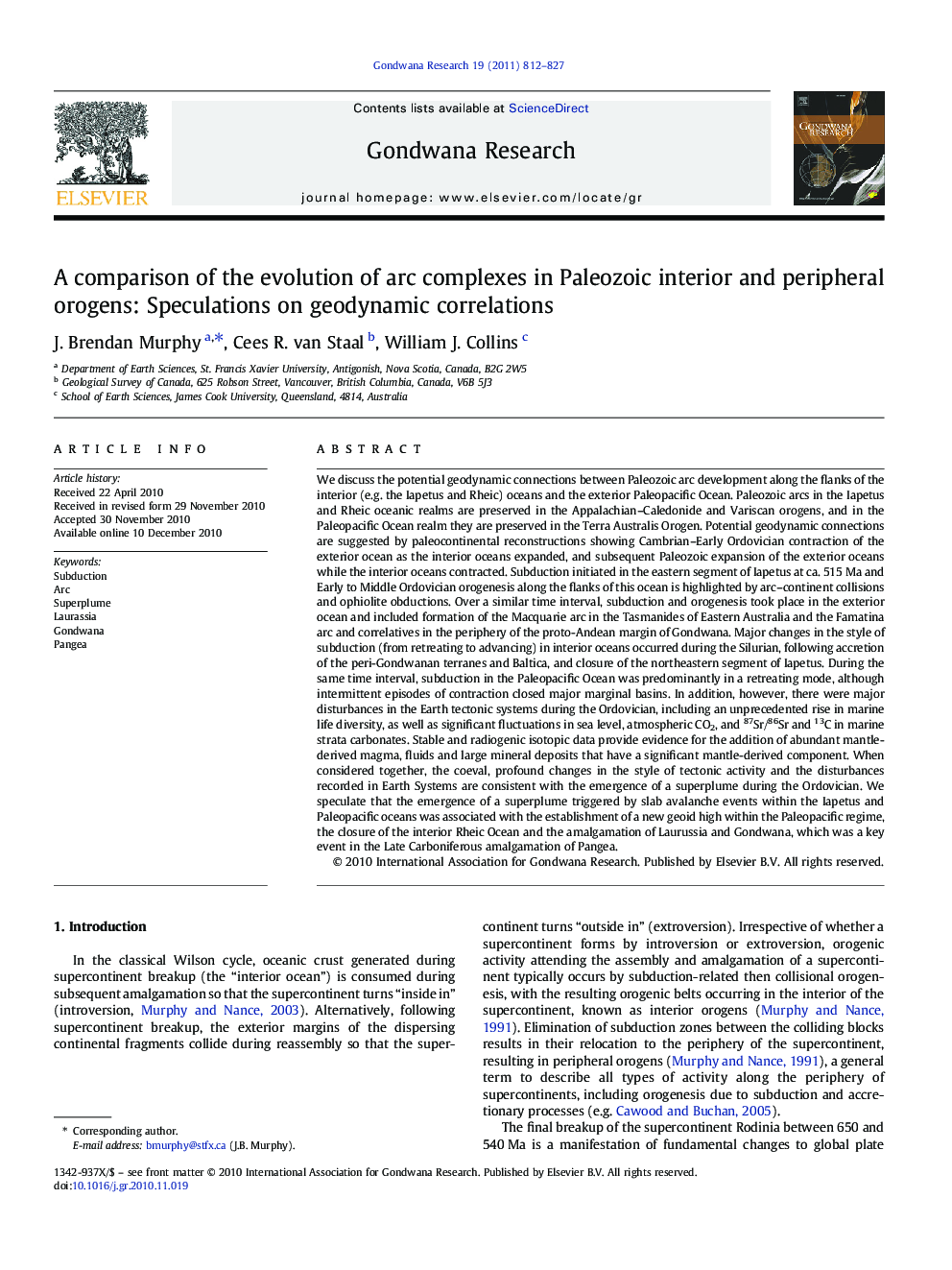| Article ID | Journal | Published Year | Pages | File Type |
|---|---|---|---|---|
| 4727217 | Gondwana Research | 2011 | 16 Pages |
We discuss the potential geodynamic connections between Paleozoic arc development along the flanks of the interior (e.g. the Iapetus and Rheic) oceans and the exterior Paleopacific Ocean. Paleozoic arcs in the Iapetus and Rheic oceanic realms are preserved in the Appalachian–Caledonide and Variscan orogens, and in the Paleopacific Ocean realm they are preserved in the Terra Australis Orogen. Potential geodynamic connections are suggested by paleocontinental reconstructions showing Cambrian–Early Ordovician contraction of the exterior ocean as the interior oceans expanded, and subsequent Paleozoic expansion of the exterior oceans while the interior oceans contracted. Subduction initiated in the eastern segment of Iapetus at ca. 515 Ma and Early to Middle Ordovician orogenesis along the flanks of this ocean is highlighted by arc–continent collisions and ophiolite obductions. Over a similar time interval, subduction and orogenesis took place in the exterior ocean and included formation of the Macquarie arc in the Tasmanides of Eastern Australia and the Famatina arc and correlatives in the periphery of the proto-Andean margin of Gondwana. Major changes in the style of subduction (from retreating to advancing) in interior oceans occurred during the Silurian, following accretion of the peri-Gondwanan terranes and Baltica, and closure of the northeastern segment of Iapetus. During the same time interval, subduction in the Paleopacific Ocean was predominantly in a retreating mode, although intermittent episodes of contraction closed major marginal basins. In addition, however, there were major disturbances in the Earth tectonic systems during the Ordovician, including an unprecedented rise in marine life diversity, as well as significant fluctuations in sea level, atmospheric CO2, and 87Sr/86Sr and 13C in marine strata carbonates. Stable and radiogenic isotopic data provide evidence for the addition of abundant mantle-derived magma, fluids and large mineral deposits that have a significant mantle-derived component. When considered together, the coeval, profound changes in the style of tectonic activity and the disturbances recorded in Earth Systems are consistent with the emergence of a superplume during the Ordovician. We speculate that the emergence of a superplume triggered by slab avalanche events within the Iapetus and Paleopacific oceans was associated with the establishment of a new geoid high within the Paleopacific regime, the closure of the interior Rheic Ocean and the amalgamation of Laurussia and Gondwana, which was a key event in the Late Carboniferous amalgamation of Pangea.
Graphical AbstractFigure optionsDownload full-size imageDownload as PowerPoint slideResearch Highlights►Geodynamic connections exist among Paleozoic arcs in interior and exterior oceans ►Changes in arc activity are coeval with disturbances in Earth Systems ►These changes may relate to the Ordovician emergence of a superplume
